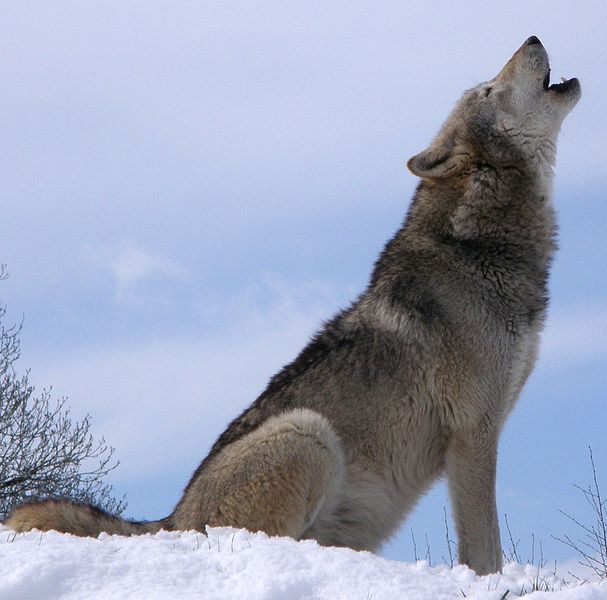April 6, 2011 by Kay D. Harrison for VetNetwork, LLC
 Dogs and their owners share a bond that is unrivaled in the animal world. Not even our closest genetic relative, the chimpanzee, can understand our gestures, facial expressions and language like a domesticated dog can. This curious relationship is the subject of new research that is leading scientists to surprising discoveries in areas of species development, the strange consequences of domestication, and the evolution of human culture.
Dogs and their owners share a bond that is unrivaled in the animal world. Not even our closest genetic relative, the chimpanzee, can understand our gestures, facial expressions and language like a domesticated dog can. This curious relationship is the subject of new research that is leading scientists to surprising discoveries in areas of species development, the strange consequences of domestication, and the evolution of human culture.
Dogs and wolves are the same species, sharing 99.8 percent of their genetic makeup. They can mate and produce fertile offspring. But in some ways, dogs and wolves are very different. Dogs cannot be taught to socialize in packs, and can never reintegrate into an established wolf pack. They just don’t get it. Wolves, on the other hand, don’t communicate or bond with humans, even when raised the same way as dog puppies.
In a recent experiment at Eötvös Loránd University in Hungary, wolf pups were raised exactly as dog puppies. By eight weeks of age, differences began to emerge. The wolves were not interested in human activities and were not especially anxious to please their human owners. By four months of age, the wolves were so “undomesticated” that they had to be returned to the wolf sanctuary.
Why can’t wolves bond with humans? In spite of being so similar to dogs genetically, they don’t seem to have the communication skills that dogs have.
It’s this curious ability of domesticated dogs to communicate with humans, to understand our emotions and our gestures that has made our relationship with dogs so special. Archeologists once believed that wolves became domesticated around 12,000 years ago. Newer research, based on genetics, not bones, has suggested a time period closer to 100,000 years ago. In these 100,000 years, something happened to make a dog less of a wolf.
On a farm in Siberia, Soviet scientists may have discovered the answer. Fifty years ago, they set up an experiment to domesticate silver foxes. The project has been teaching scientists a great deal about the process of domestication. By selectively breeding only the least aggressive foxes, researchers succeeded in eight generations, to create “pet” foxes.
The pet foxes are friendly, trainable, affectionate and obedient. Although they are genetically identical to aggressive wild foxes, the new generations are beginning to show physical as well as behavioral changes. Blood tests show lower levels of adrenaline. Their ears are floppier, legs are shorter, and their tails are curlier. In short, they are beginning to look like dogs.
Could this be what happened to the wolves that joined humans in their hunting camps 100,000 years ago? Humans and wolves were group hunters who were active during the daylight, strange among wild carnivores. Hunting together must have given them an advantage. The intervening generations of domestication have changed dogs in a fundamental way.
Dogs that were able to read emotion in human faces would be naturally selected for survival. Knowing when to be frightened and when to follow was certainly an advantage to primitive dogs. Today, after so many generations of co-dependence and co-habitation, dogs and humans communicate. Dogs read human faces, learn words, and follow gestures such as pointing. Chimpanzees can learn words, but cannot be trained to follow a gesture or read a human emotion in a facial expression. Dogs know these things instinctively. Humans, too, understand. Experiments show that we understand dog barks surprisingly well.
Domestication of the wolf has provided humans with a faithful companion – the dog. This faithful companion protects us, sympathizes with our emotions, and obeys our commands. It makes one wonder: What will dogs be like in another 100,000 years?